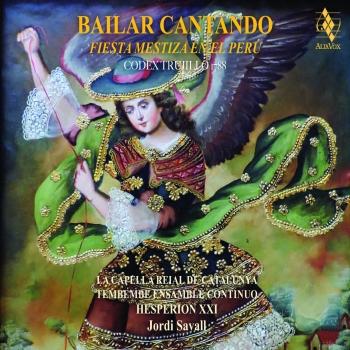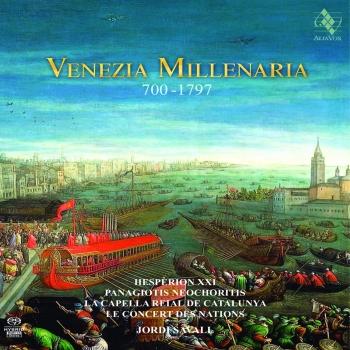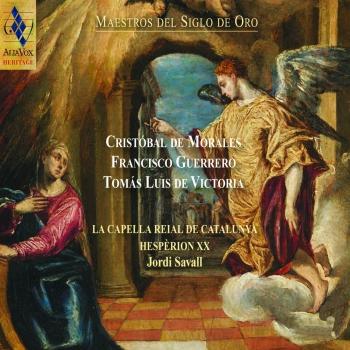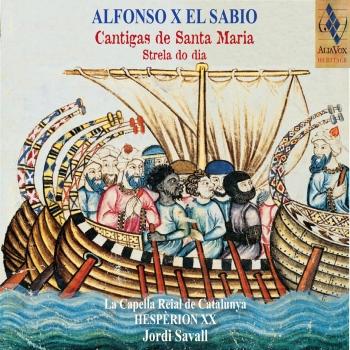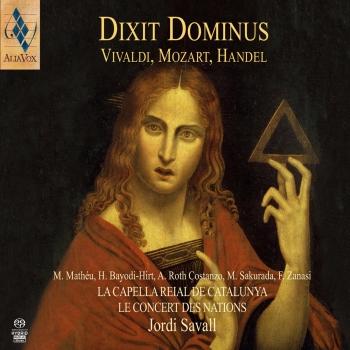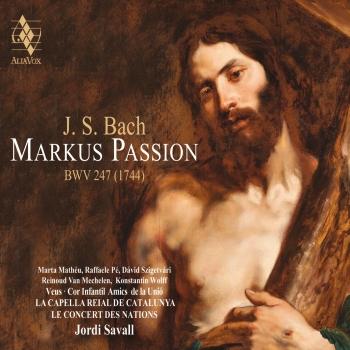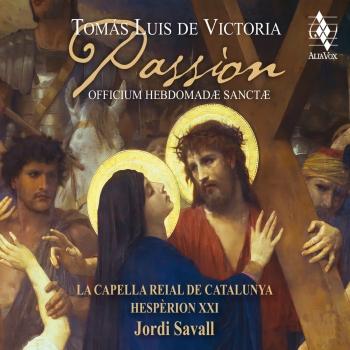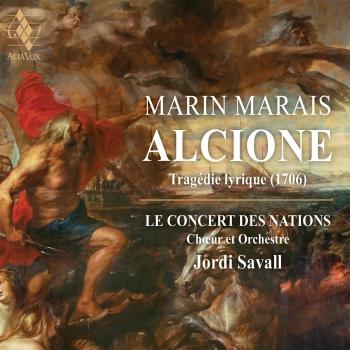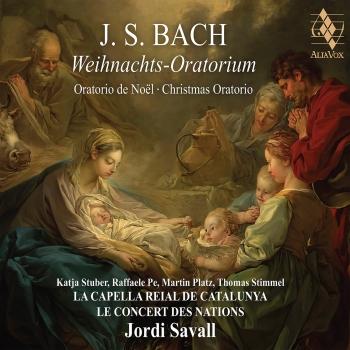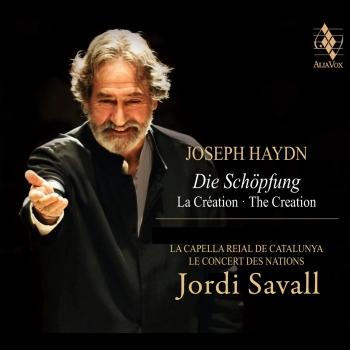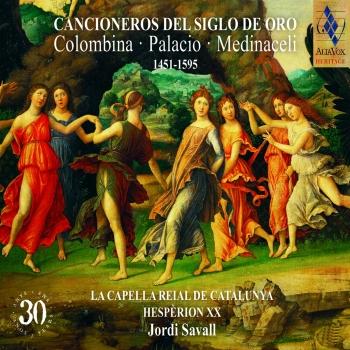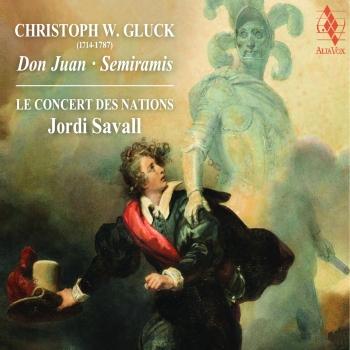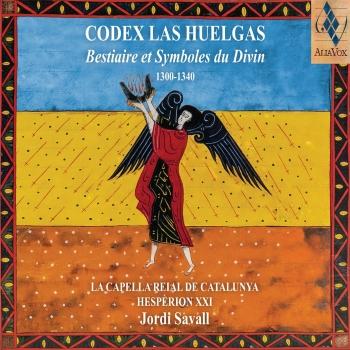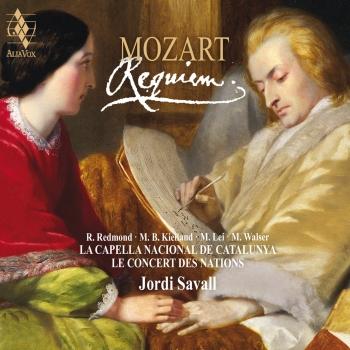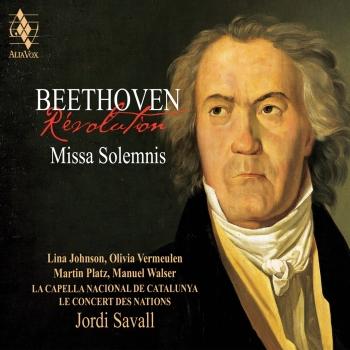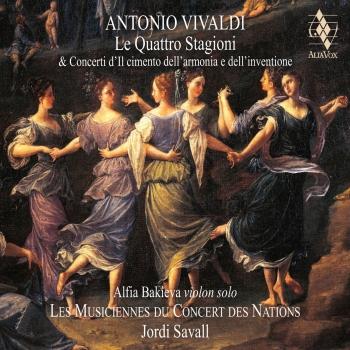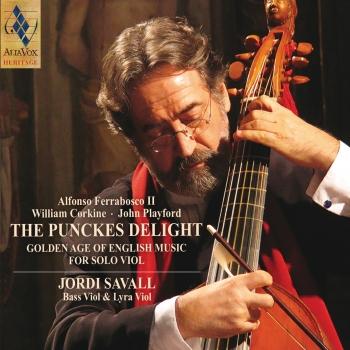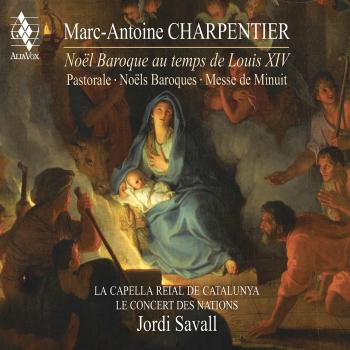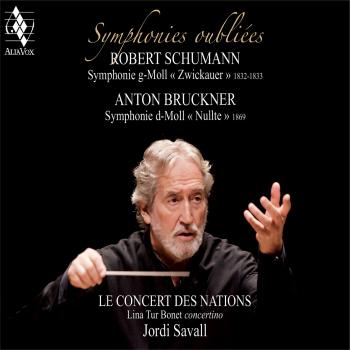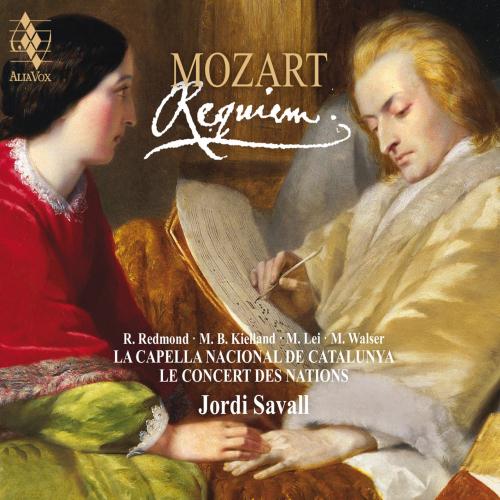
W. A. Mozart: Requiem in D Minor, K. 626 Jordi Savall
Album Info
Album Veröffentlichung:
2023
HRA-Veröffentlichung:
05.05.2023
Label: Alia Vox
Genre: Classical
Subgenre: Choral
Interpret: Jordi Savall
Komponist: Wolfgang Amadeus Mozart (1756 –1791)
Das Album enthält Albumcover
- Traditional, Wolfgang Amadeus Mozart (1756 - 1791): Requiem in D Minor, K. 626:
- 1 Traditional, Mozart: Requiem in D Minor, K. 626: I. Introitus: Requiem aeternam 04:04
- 2 Traditional, Mozart: Requiem in D Minor, K. 626: II. Kyrie eleison 02:26
- 3 Traditional, Mozart: Requiem in D Minor, K. 626: III. Sequentia: No. 1, Dies irae 01:49
- 4 Traditional, Mozart: Requiem in D Minor, K. 626: III. Sequentia: No. 2, Tuba mirum 03:06
- 5 Traditional, Mozart: Requiem in D Minor, K. 626: III. Sequentia: No. 3, Rex tremendae 01:46
- 6 Traditional, Mozart: Requiem in D Minor, K. 626: III. Sequentia: No. 4, Recordare 05:07
- 7 Traditional, Mozart: Requiem in D Minor, K. 626: III. Sequentia: No. 5, Confutatis 02:22
- 8 Traditional, Mozart: Requiem in D Minor, K. 626: III. Sequentia: No. 6, Lacrymosa 02:59
- 9 Traditional, Mozart: Requiem in D Minor, K. 626: IV. Offertorium: No. 1, Domine Jesu 03:12
- 10 Traditional, Mozart: Requiem in D Minor, K. 626: IV. Offertorium: No. 2, Hostias 03:13
- 11 Traditional, Mozart: Requiem in D Minor, K. 626: V. Sanctus 01:22
- 12 Traditional, Mozart: Requiem in D Minor, K. 626: VI. Benedictus 04:32
- 13 Traditional, Mozart: Requiem in D Minor, K. 626: VII. Agnus Dei 03:31
- 14 Traditional, Mozart: Requiem in D Minor, K. 626: VIII. Communio: Lux aeterna 05:11
Info zu W. A. Mozart: Requiem in D Minor, K. 626
Mein ganzes Leben wäre gewiss anders verlaufen, hätte ich nicht an einem Oktoberabend des Jahres 1955 die Gelegenheit gehabt, einer Konzertprobe von Mozarts Requiem beizuwohnen. Einige Monate zuvor, am ersten August, hatte ich gerade mein vierzehntes Lebensjahr vollendet. Der Zufall wollte es, dass mein Lehrer Joan Just, Komponist und Leiter des Konservatoriums meiner Geburtsstadt Igualada, damals das Werk mit dem Chor der örtlichen Schola Cantorum einstudierte. Ich war an jenem Abend zum Konservatorium gegangen, um wie üblich den Unterricht in Kontrapunkt und Harmonielehre bei meinem Lehrer zu besuchen. Den Hinweis, dass die Stunde wegen der Proben zum Requiem ausfiel, hatte ich irgendwie übersehen.
So hatte ich die Gelegenheit, hinten im Saal sitzend unbemerkt der Probenarbeit zu lauschen. Nur eine Orgel und ein Streichquartett begleiteten damals den Chor. Bereits bei den ersten Klängen war ich gebannt von der unfassbaren Schönheit des Werks, von der Ausdruckskraft der Melodien, der Originalität der verschiedenen Themen, von der Vollkommenheit des Kontrapunkts und der Vielfalt der Modulationen. Als der letzte Akkord verklang, war ich zutiefst berührt von dem außergewöhnlichen Ereignis. Es hatte mich in eine nie zuvor erlebte Dimension versetzt. Ich war überwältigt von dieser wahrhaft leuchtenden „lux eterna“ und der tröstenden Kraft, die das majestätische Werk ausströmte. Auf dem Heimweg wurde mir klar, dass ich gern Musiker werden würde, wenn die Musik in der Lage war, die Seele so stark zu berühren.
Wenige Tage später fuhr ich nach Barcelona, um mir ein gebrauchtes Cello zu kaufen. Wieder zu Hause, versuchte ich ein bisschen zu spielen. Nach anfänglichem Zögern fühlte ich gleich eine enge Verbundenheit mit dem Instrument; die Finger der linken Hand fanden ihre Position und bewegten sich leicht und präzise auf dem Griffbrett, während die rechte Hand schnell lernte, aus lockerem Gelenk, mit geschmeidig geführtem Bogen Klänge hervorzubringen. Kurz und gut, die herrliche Empfindung, wieder singen zu können, durchdrang mich und ich fühlte mich zu Hause angekommen! Da verstand ich die Bedeutung des einzigartigen Gefühls, von dem Mark Twain sprach, als er äußerte: „Die zwei wichtigsten Tage im Leben sind der Tag, an dem man geboren wird, und der Tag, an dem man entdeckt, warum man geboren wurde.“ In der Tat sah ich nach dem Anhören von Mozarts Requiem und meinen ersten Versuchen auf dem Cello mit innerer Gewissheit, welchen Weg ich zu gehen hatte: Ich musste forthin daran arbeiten, dieses Licht, das dem Leben seinen Sinn gibt und unsere Seele nährt, einzufangen und weiterzugeben.
La Capella Reial de Catalunya
Le Concert des Nations
Jordi Savall, Dirigent
Jordi Savall
Born on August 1, 1941, in Igualada, near Barcelona, Spain; married Montserrat Figueras (a musician), 1968. Education: Barcelona Conservatory, diploma; Schola Cantorum Basiliensis, diploma, 1970. Addresses: Record company---Naive Classique, 148 rue du Faubourg Possinière, 75010 Paris, France.
The works performed by Catalan gambist and conductor Jordi Savall span several centuries---from the music of Alfonso el Sabio, king of Castile and Léon, to the works of J. S. Bach---bringing to life the splendor and passion of bygone eras. A performance by Savall is more than a musical experience: the extraordinary power and beauty of his playing magically removes the listener from the flux of time, creating a space in which such obstacles to enjoyment as historical distance, stylistic peculiarities, and idiomatic enigmas simply disappear. For example, historical periods, including the Baroque, have often been described as "distant." Indeed, the physical and mental universe of seventeenth-century France may seem distant to a person living in the twenty-first century. But that distance vanishes when Savall plays the music of the great French master of the bass viol, Marin Marais.
First of all, Savall's main instrument is the viola da gamba, or bass viol (he also plays the smaller viols), not as a quaint relic that needs some special justification or antiquarian explanation. True, in the late 1700s, the viola da gamba---which is not a different kind of cello, but a member of the viol family, a distinct group of instruments of varying sizes---was supplanted by the cello, as the latter instrument, with its potential for virtuosity, satisfied the requirements of changing musical styles. However, to Savall, his instrument is irreplaceable. In fact, according to Savall, the viola da gamba has a particular sonic richness that the more "modern" cello lacks. As Savall explained to Chris Pasles of the Los Angeles Times, the "viola da gamba is totally different from a cello. It's closer to the lute---a lute with a bow, in fact. With six strings, frets like a guitar, a softer sound, it's more rich in different colors." Instead of merely reproducing a particular musical composition, Savall captures and expresses the timeless humanity of the music, illuminating the particular composition as a universally comprehensible document of the human experience. A case in point is Savall's mesmerizing performance of Marais's musical description, found in Book V of his Pièces de viole, of his gallstone operation. Written under the influence of François Couperin's character pieces, this extraordinary composition, especially in Savall's version, remains one of the most suggestively dramatic works of Baroque music.
Born in 1941, near the Catalan city of Barcelona, Savall began his musical education at the age of six. After graduation from the Barcelona Conservatory, where he studied the cello, Savall went to Basel, Switzerland, where he studied the viola da gamba with August Wenzinger at the Schola Cantorum Basiliensis, receiving a diploma in 1970. His other teachers included Wieland Kuijken, in Brussels. In 1973 Savall took over Wenzinger's post at the Schola Cantorum. By the early 1970s, Savall was already considered one the greatest viola da gamba players. In addition, he worked hard to enrich his instrument's repertoire, rescuing many works from oblivion and performing and recording numerous forgotten compositions. Savall thus exemplified, as he still does, the learned performer, who constantly studies the vast field of old music, bringing many neglected compositions to light. Among these lesser-known compositions are works by Marais, whose rich and fascinating oeuvre includes more than 500 pieces for viola da gamba and keyboard accompaniment, assembled in five books of his Pièces de viole.
In 1974 Savall and his wife, soprano Montserrat Figueras, founded Hespèrion XX---later, in the twenty-first century, known as Hespèrion XXI---an international ensemble that has gained great acclaim for its extraordinary performances of music from the Middle Ages to the Baroque. In 1987, returning to his native city after his extensive sojourn in foreign lands, Savall formed the Capella Reial de Catalunya, a vocal group that, under his direction, has performed and recorded music by Tomáa Luis de Victoria, Francisco Guerrero, and Claudio Monteverdi.
In 1989, further expanding his repertoire and musical activities, Savall founded the Concert des Nations, an ensemble consisting of younger musicians from Spain and Latin America. Under Savall's direction, this orchestra, which plays on period instruments, has recorded a variety of works from the Baroque and Classical periods.
Savall's career received a tremendous boost when film director Alain Corneau asked him to play on the soundtrack for Tous les matins du monde, his 1992 film about Marais and his teacher, Sainte-Colombe. Based on Pascal Quignard's admirable 1991 novel--available in English as All the World's Mornings--which imagines the life of the mysterious Sieur de Sainte-Colombe, the film is a spell-binding portrait of seventeenth-century France with the music, performed by Savall, providing a foundation for the narrative. Savall himself indirectly inspired Quignard's novel: it was a 1976 recording by Savall that introduced the writer to Sainte-Colombe's music. The music that Savall performs on the soundtrack is mostly by Marais and Sainte-Colombe, though it also includes a segment of François Couperin's deeply spiritual Leçons des ténèbres. Savall is inspired in his performance of the heartrending Tombeau les regrets, which, in Quignard's imagination, Sainte-Colombe played to conjure up the spirit of his deceased wife. In Savall's hands, this music, which appears as a leitmotif throughout the film, graces the rich tapestry of the film as a mysterious aura.
In 1988 the French Ministry of Culture awarded Savall the title of Officier de l'Ordre des Arts et Lettres. His recordings, numbering more than one hundred, have received many awards, including the Double Disc of Gold and the Diapason d'Or. In 1997 Savall's recording company, Astrée, founded a separate label, Fontalis, for his recordings. The following year, Savall started his own label, Alia Vox, which later reissued many of his earlier recordings at an affordable price. Savall's remarkable career is more than a personal triumph: thanks to his superb musicianship, the viola de gamba has emerged from the shadows of the past, becoming the instrument of choice for many younger performers. For such performers, the rich repertoire of the Renaissance and Baroque offers not only infinite artistic challenges and possibilities but the opportunity to abolish the somewhat artificial barrier separating "early" music from the rest of the musical tradition. (Zoran Minderovic)
Dieses Album enthält kein Booklet









